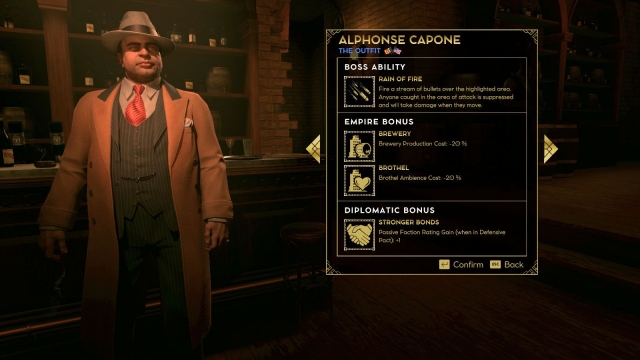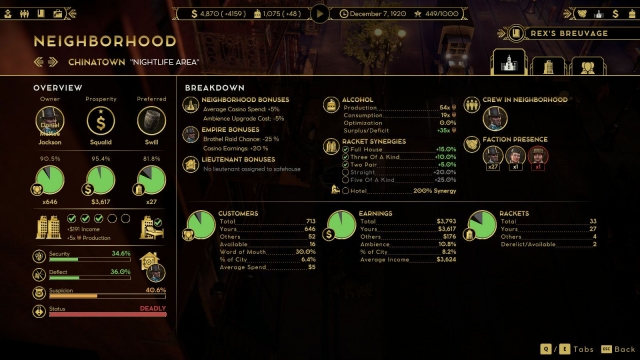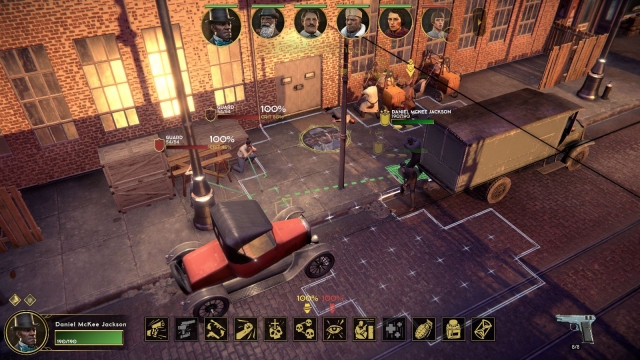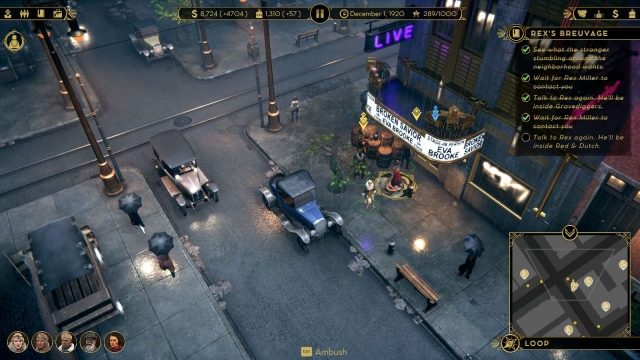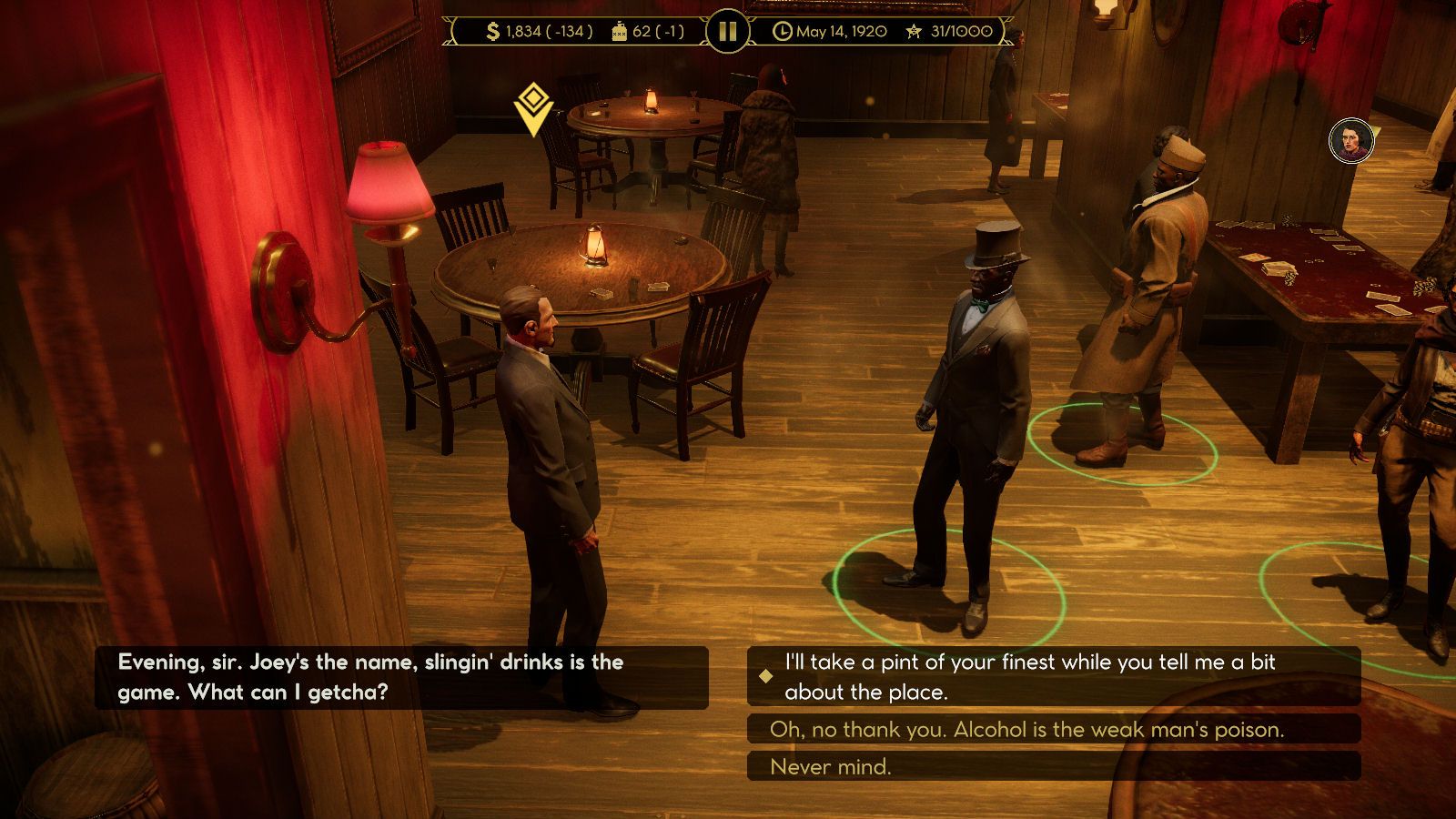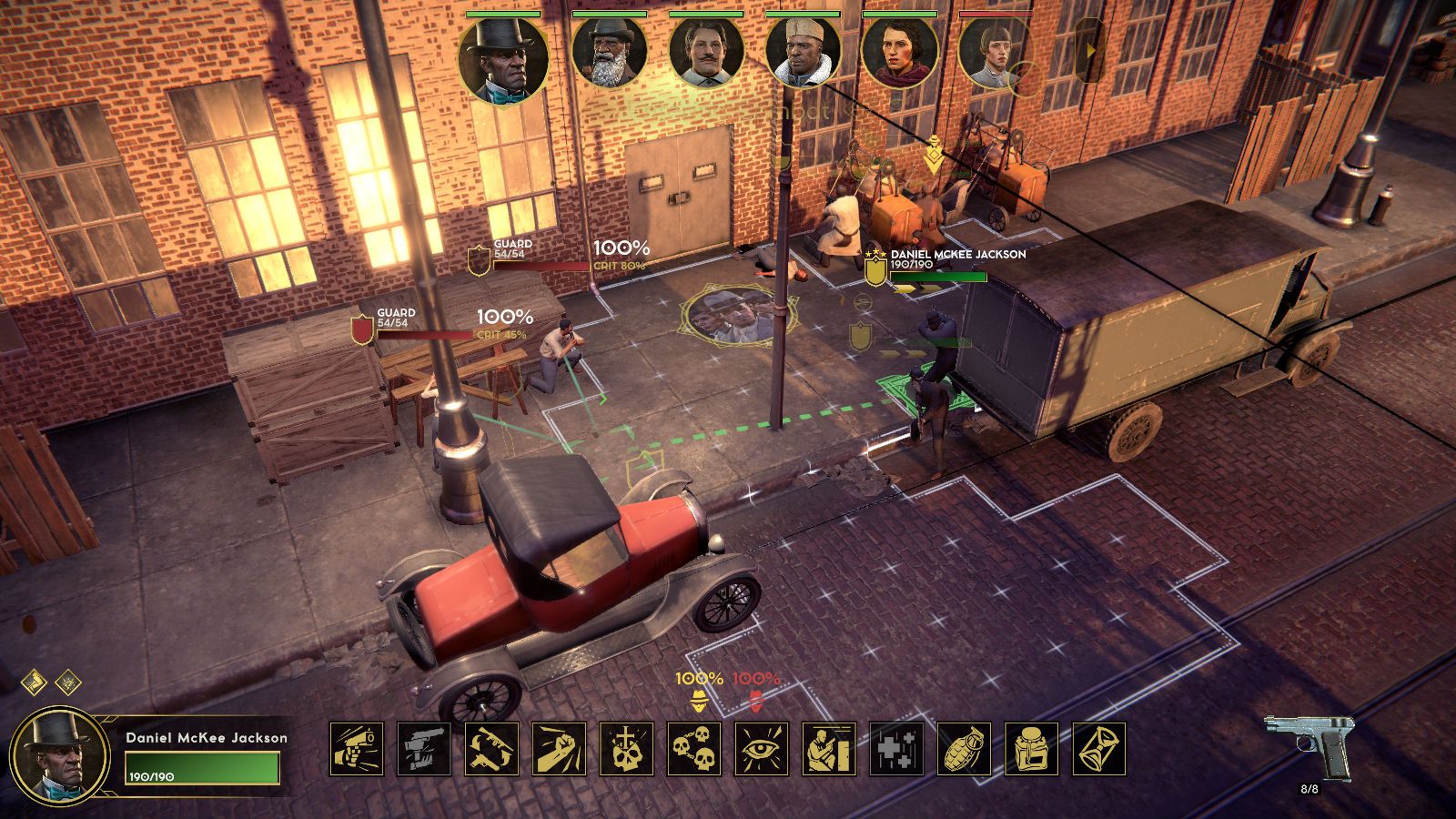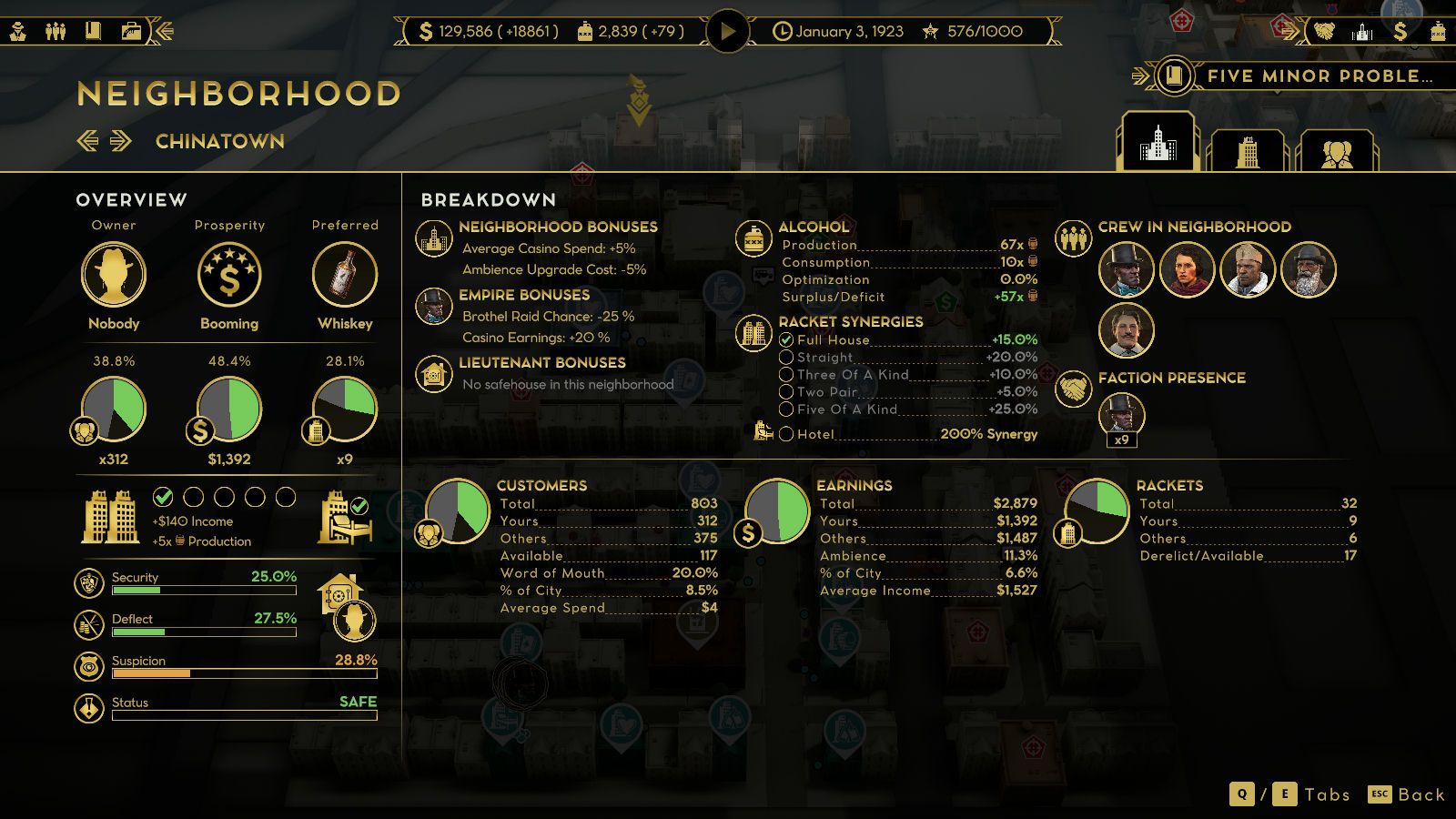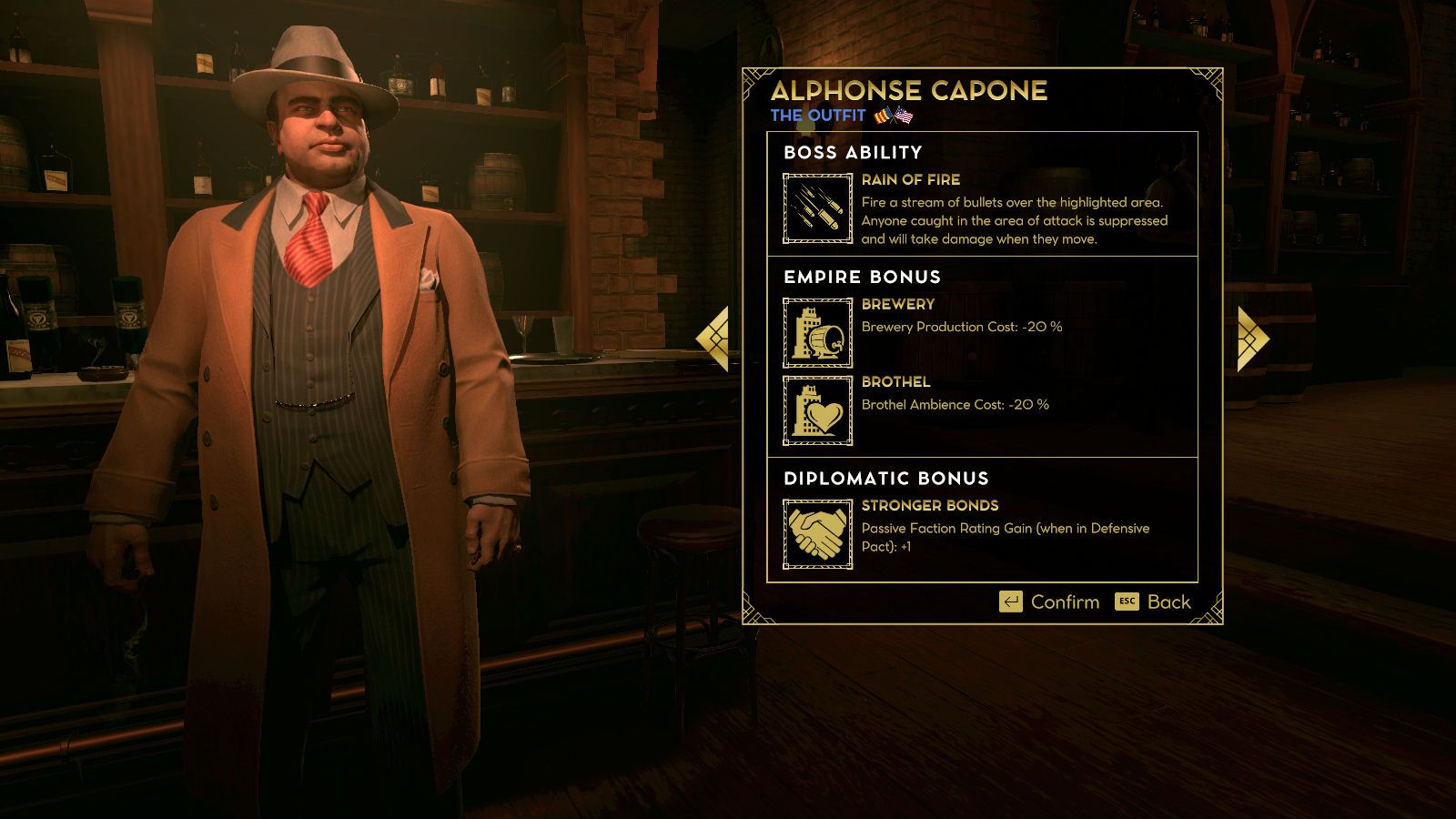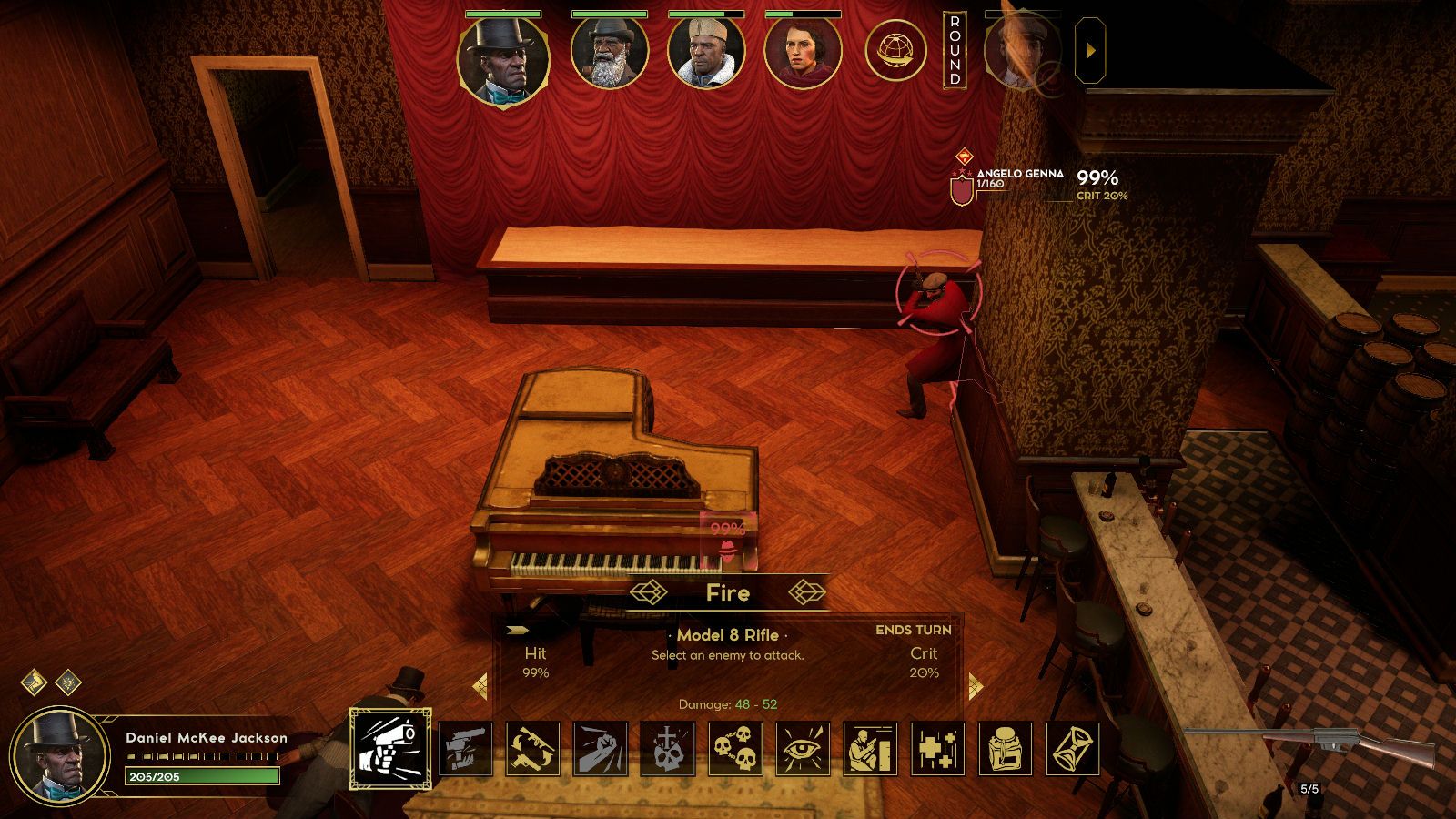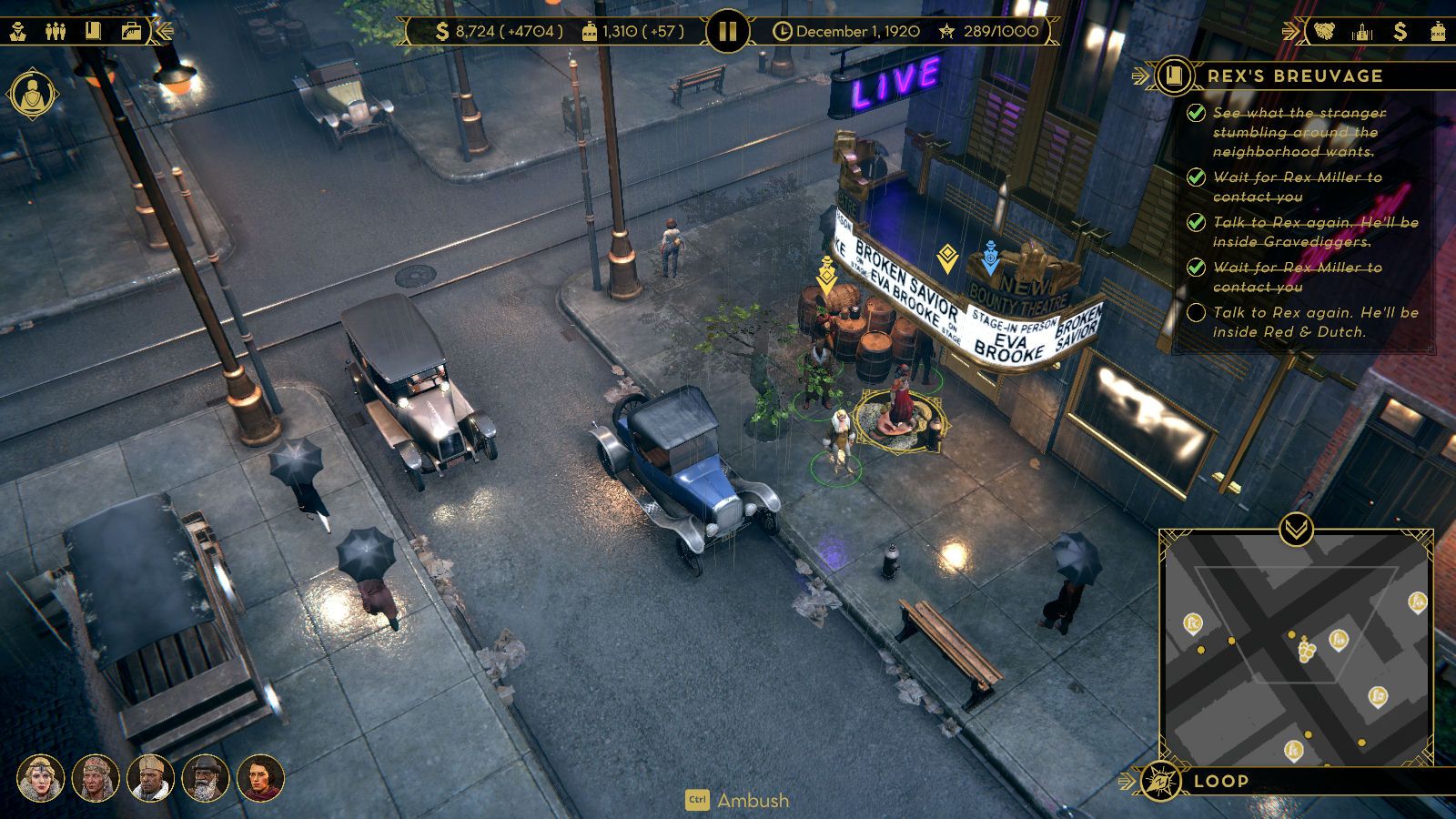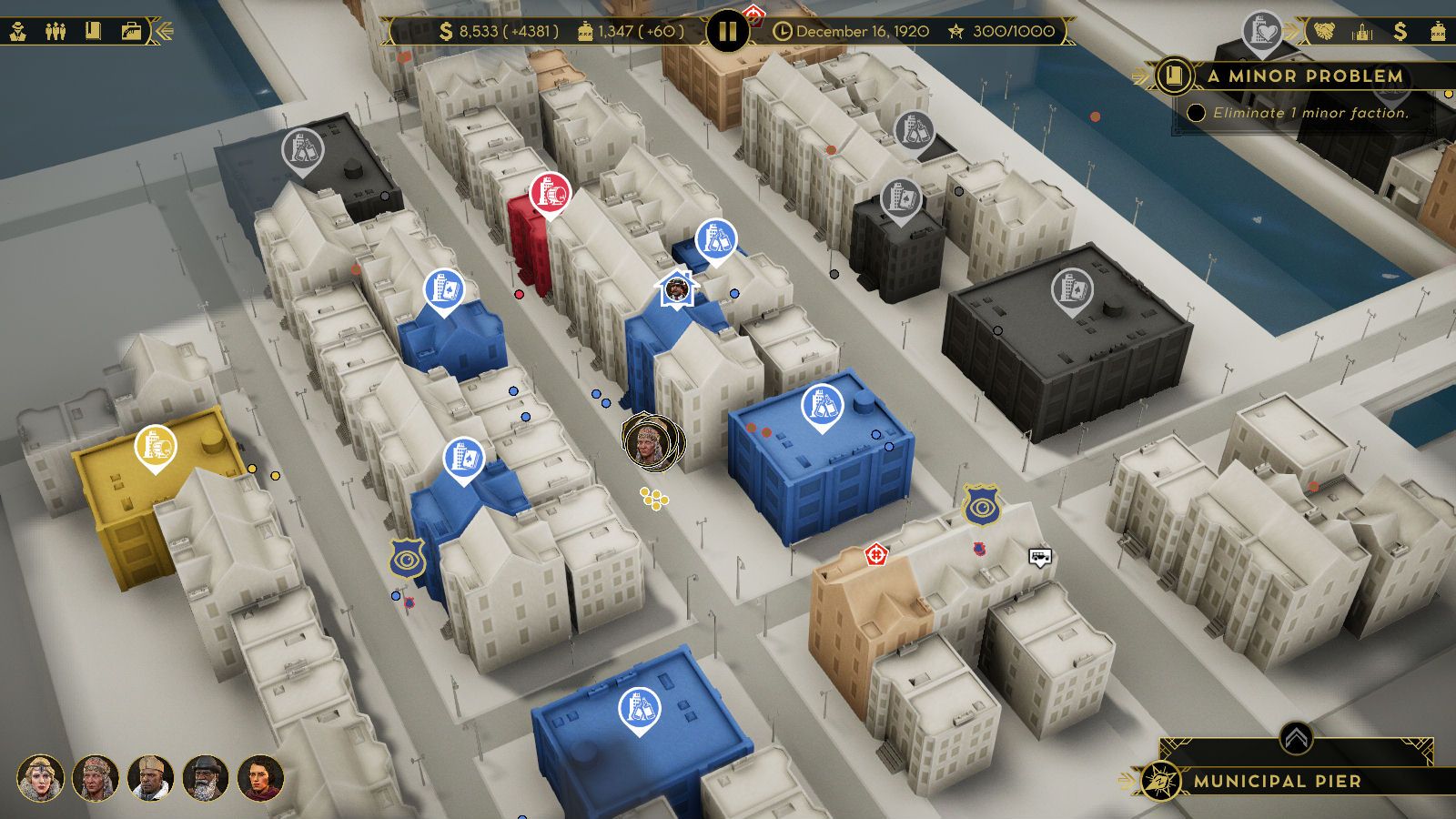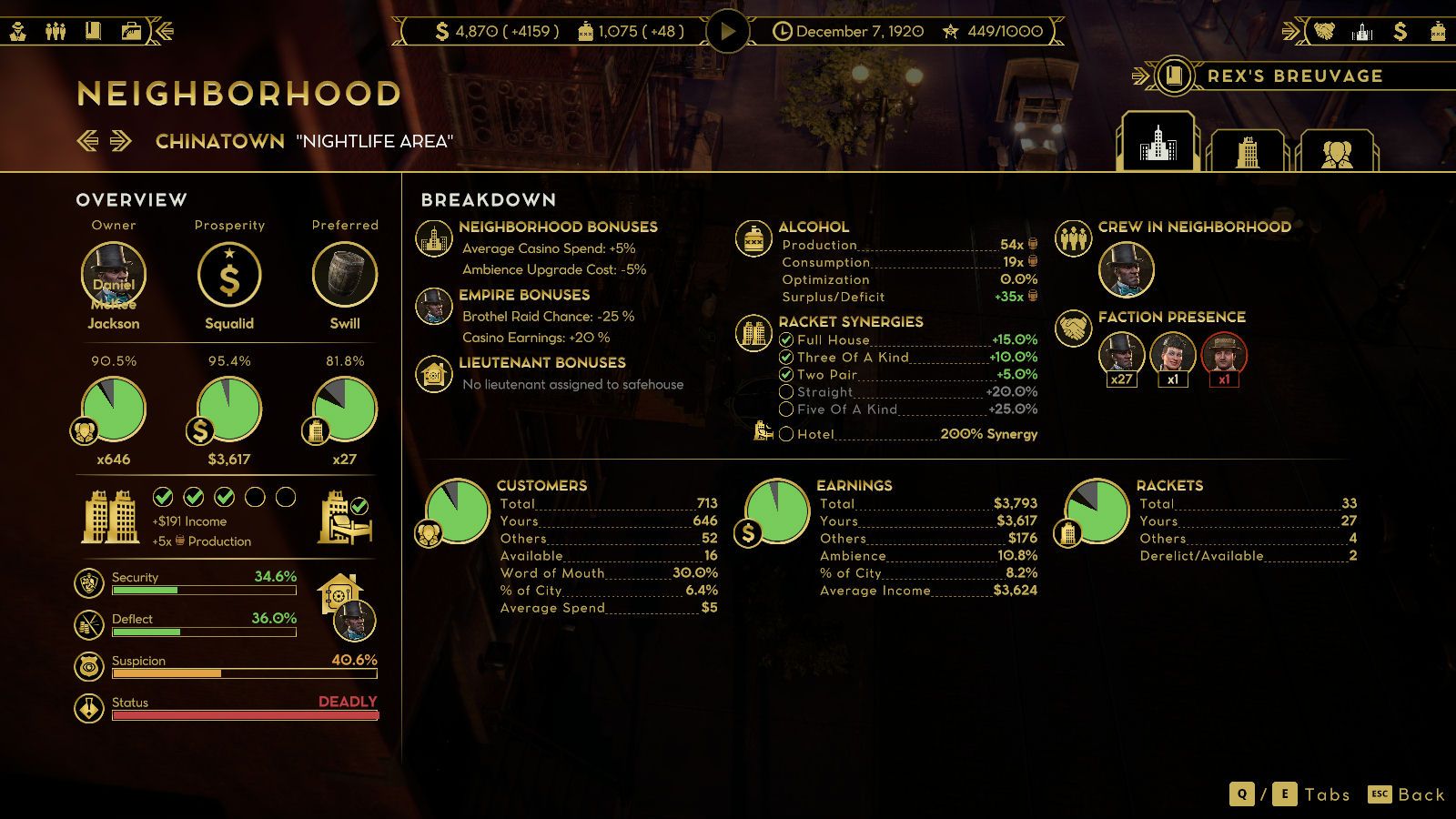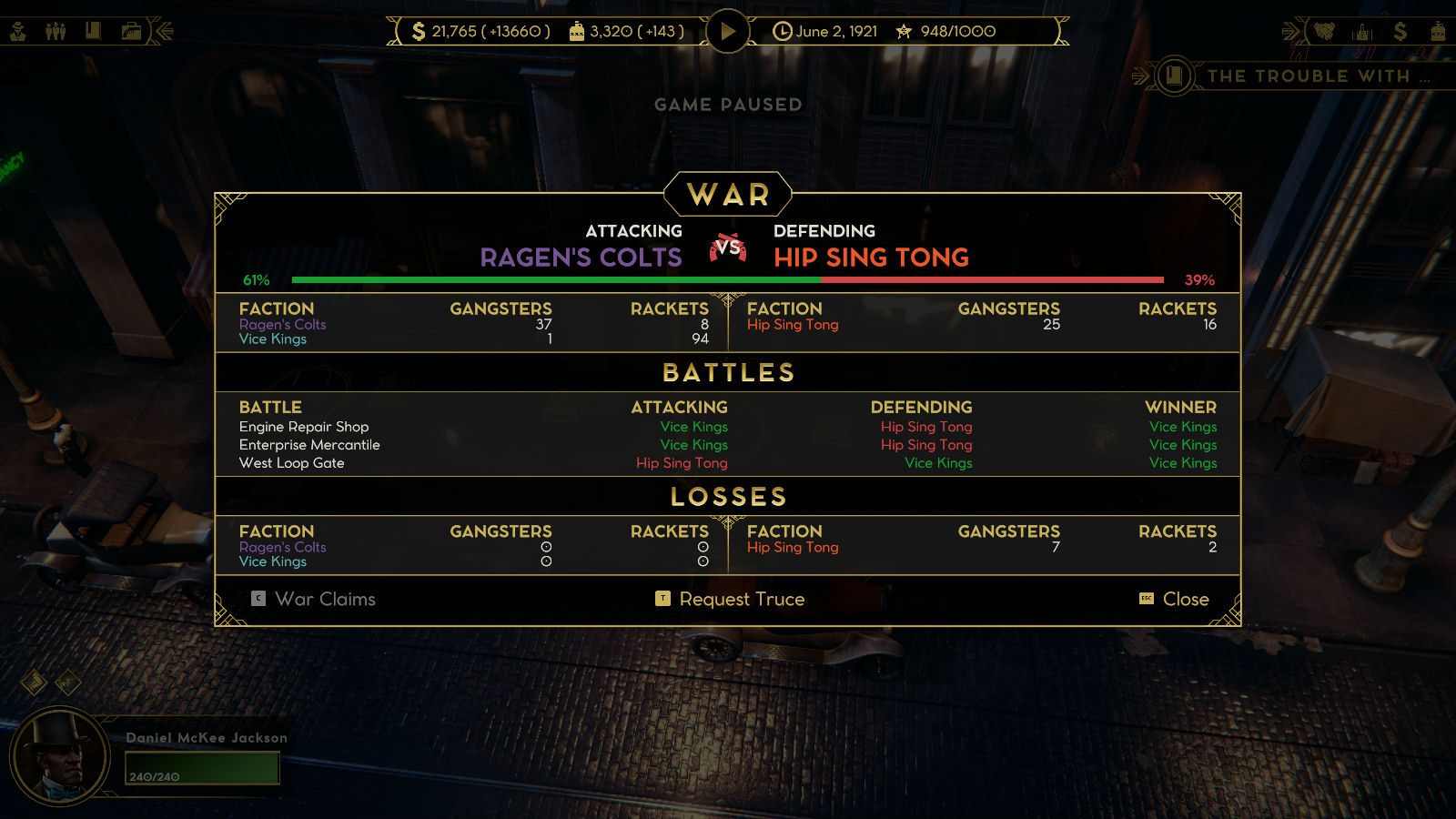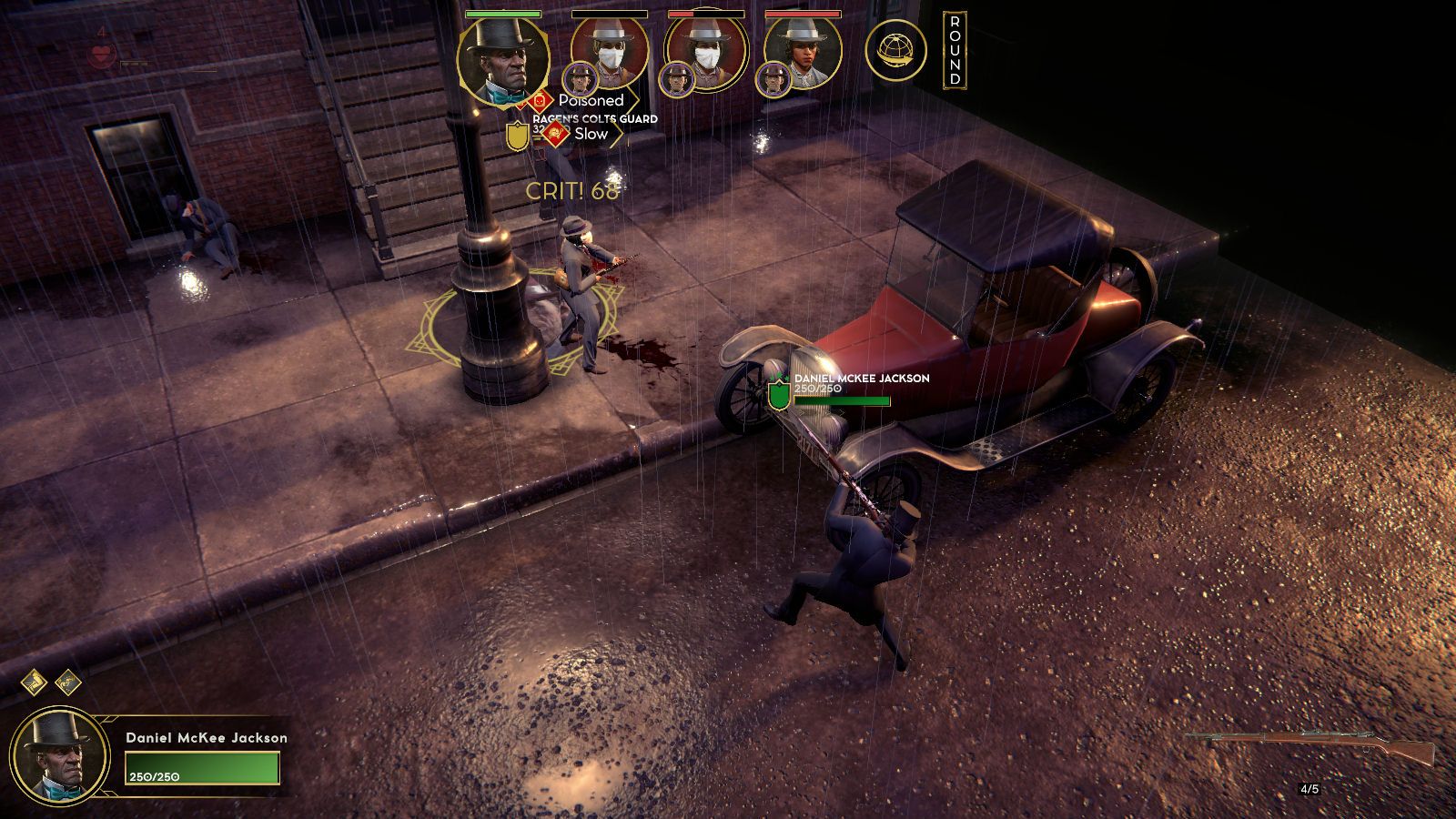Empire of Sin
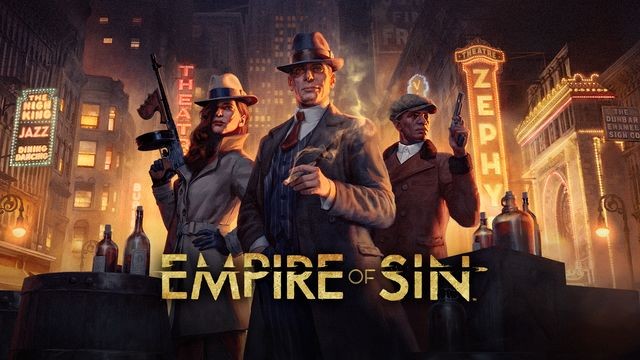
Empire of Sin is a strategy game set in 1920s Chicago, where you take control of a major crime faction and try to expand your territory and defeat your rivals. The game was developed by Romero Games, which is headed by John Romero and his wife Brenda. If the Romero name sounds familiar, it’s because John Romero was famous in the 90s for his work in first-person shooters like Doom and Quake. Empire of Sin is about as far away from a first-person shooter as one can get — it’s basically a turn-based 4X game — which might explain why it is only sporadically successful.
At the start of Empire of Sin, you choose your boss. There are 14 choices available, covering a variety of genders and ethnicities. Most of the bosses are based on real people, and include the likes of Al Capone, Joe Saltis, and Stephanie St. Clair. Each boss gets some bonuses and a special attack. For example, if you’re playing the funeral director Daniel McKee Jackson, then you get improved earnings with your casinos, reduced raid chances on your brothels, and improved relations with the other families, and you get the Last Rites ability, which allows you to fire your pistol until you run out of bullets or targets.
Empire of Sin doesn’t have a campaign; it’s more of a sandbox game, so after picking your boss, you have to choose the parameters you want to use, including the number of neighborhoods (up to ten), the number of opposing factions (up to 13), and the difficulty (with five unexplained choices, from “associate” to “boss”). The only way to win the game is to defeat the other factions, so the more of them there are, the longer your game takes. The number of neighborhoods doesn’t seem to make any difference at all. Sometimes they just sit empty.
When the game starts up, you’re placed in one of the neighborhoods, where you’re given a safehouse and a pair of “rackets.” Rackets are enterprises like breweries, brothels, casinos, hotels, and speakeasies. Breweries supply alcohol to the other rackets, which allows them to make more money. Hotels supply more clients for the rackets. Brothels, casinos, and speakeasies make money, and there isn’t much of a difference between them. Safehouses produce a small amount of alcohol, but mostly they’re just places where you can heal up quickly between battles.
All of the rackets except for hotels can be upgraded in a variety of ways. There are upgrades for security (so the racket has more guards inside and out), deflection (so the racket doesn’t get raided as often), ambiance (so the racket quality is higher), and word of mouth (so the racket becomes more popular). Breweries also need to be upgraded so they can produce better alcohol, ranging from “swill” to full-fledged whiskey. It costs way more money to upgrade a racket than to create a new one, so early in the game you’re better off expanding rather than improving, but eventually you have to decide when to stop and consolidate.
To create a new racket, you first have to hire some gangsters (there are 55 available in the game), and you have to attack a building to claim it as your own. At the start of the game, most buildings are controlled by “thugs” who are easy to defeat. Every time you defeat the guards at a building, you can establish a racket there (which costs you a start-up fee), you can loot the building (which earns you some money and maybe some equipment for your boss and gangsters), you can “smash up” the building (which makes it unavailable for use for about a year), or you can “raze” the building if one of your gangsters is a demolitionist (which makes it unavailable for the rest of the game). So you always have choices for investing, making money right away, or hurting your opponents.
When you attack a building, the conflict is resolved through turn-based combat. Each round, characters get two action points to spend on abilities, attacks, or movement. If they move behind walls or other obstacles, then they get a cover bonus, which makes them more difficult to hit. If they don’t spend all of their AP, then they can enter Overwatch mode and fire at anybody who comes into range of their weapon. There are also consumables like bandages and grenades that can be used. This might all sound familiar. The combat system in Empire of Sin is pretty basic, but at least with some of the crazy abilities (like Meat Hook, which allows you to drag an enemy to you), the battles stay interesting enough.
Oddly, the computer controlled factions (there isn’t any multiplayer) play in a different way than you do. They keep their boss and gangsters hidden inside their safehouses, and they use roving bands of guards to attack buildings. That works out okay most of the time, but during wars it can result in a seemingly endless string of dull battles as enemy guards attack the guards you have protecting your rackets. There isn’t any way to auto-resolve these “redshirt” battles, and it might take you an hour or more before you can finally grind your way through them (unless you’ve spent boatloads of money upgrading your defenses, or if you happen to have your boss and gangsters in the area). As a result, I avoided wars at all costs — until I was ready to take on a faction, and then I parked my boss and gangsters right outside their safehouse before declaring war, and killed their boss before they could do anything about it.
Killing a boss defeats an enemy faction, and it causes you to inherit their rackets. Better yet, all enemy bosses drop a unique weapon, which is frequently more valuable than all of their holdings put together. In fact, because killing a boss is so lucrative, one strategy for the game is to “zerg rush” your opponents and take out at least a couple of them right away before they can upgrade their security. If you practice this, then you might be able to finish a game of Empire of Sin in a couple of hours. Otherwise, if you build up your territory and only take on bosses here and there, then you’re looking at something more like 10-20 hours.
I played through Empire of Sin three times. The first two times, I used middling difficulty settings, and the games were easy and meh. But then I tried the “boss” (most difficult) setting, and I experienced a lot more challenge and tension. Still, all three games were pretty similar because there isn’t a lot of variety for what you can do — a bad sign for a sandbox game — and way too many parts of the game are under-developed (AI, diplomacy), unbalanced (weapon quality, instant taxi travel), or simply buggy (missions). So while I had some fun here and there, and while I can see some potential if I squint just right, Empire of Sin is a tough game to recommend. You’re much better off waiting for some patches and DLCs, and certainly for a price drop, before investing any of your time or money in it.
Reviewed By: Steven Carter
Publisher: Paradox Interactive
Rating: 70%
——————————————————————————–
This review is based on a digital copy of Empire of Sin for the PC provided by Paradox Interactive.
 Game Over Online
Game Over Online